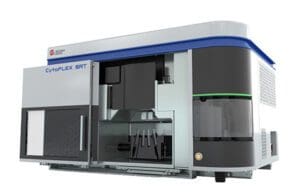
The CytoFLEX SRT is a benchtop cell sorter from Beckman Coulter.
Ten years ago, as a Ph.D. student fellow at Indiana University studying the evolution of prokaryotes, the cheapest and easiest way for me to sequence some microbes was to send them halfway around the world to China. Even with quick shipping and no problems with the sequencing, it could take up to a month for me to see results. I was sure there had to be a better way, but with existing instruments, I had no idea what that would be.
Now, as a product manager at Beckman Coulter Life Sciences, I can say that a range of technological advancements means that researchers can conduct their experiments at their own bench. Improved automation in the form of robot arms and liquid handlers, as well as better software and user interfaces, make it possible to readily handle once-complicated tasks like library prep and cell sorting in-house without years of training. And in a job market with high worker turnover and labor shortages, that can be a major advantage.
Single-cell omics studies give scientists the power to deeply interrogate the biology of individual cells. For example, before someone could begin to look at genomics, transcriptomics, proteomics, and more, they had to isolate and barcode individual cells. This step requires flow cytometry to sort cells into different groups. But many cell sorters were too bulky and expensive for smaller labs to use. As a result, these researchers looking to harness insights from single-cell biology have had no choice but to outsource prep and analysis to third-party companies. But as devices have gotten smaller and cheaper, more labs can take control of their own science. For example, the CytoFLEX SRT cell sorter, a next-gen cell sorter released in 2021, is a benchtop machine the size of a large suitcase. It uses specialized lasers and up to 15 different fluorescent detectors to sort cells into tubes, slides, or microplates. Its compact footprint and streamlined user interface mean that smaller labs can leverage powerful cell sorting research and processing capability for the first time without needing to hire a specialized technician to use a single machine or wait for shared resource availability.
Other methods are being simplified, too. The process for plasmid prep and PCR cleanup has stayed the same for nearly 30 years. Since the 1990s, scientists have used manual column cleanup protocols to remove primers, enzymes, salts and short, single-stranded DNA snippets from their PCR reactions. Even with the help of commercial kits, the process requires a lot of time—and a lot of pipetting. Advances like the EMnetik system change that dynamic by nearly halving the prep time from 30 minutes to 16.
The EMnetik 24 microparticle processor produces an electromagnetic field that mixes and separates SuperSPRI beads that bind to DNA. This capability means less time spent pipetting and more reproducible results. It might not sound like a big difference, but when you have to process a large number of samples, these products can create valuable time savings.
Some of the biggest changes have come with DNA sequencing. Early sequencers that used Sanger sequencing could occupy half of a small room, and many universities built sequencing cores to do just that. Having a small desktop sequencer back then seemed as far-fetched as a home office-sized color printer, scanner, and copier might have once seemed. Technological improvements in color printers and DNA sequencing mean that these items are now within reach for many of us. But even the smallest, fastest sequencer still requires library prep. With the upcoming launch of the Biomek NGeniuS next-generation library prep system, a scientist will be able to process 4 to 24 samples at a time without needing to learn how to code or spend days pipetting.
These advancements are even allowing researchers to redefine what a lab bench is. For example, Nanopore DNA sequencers can transform the Amazon rainforest into a genomic sequencing hub. As a result, researchers can bring the lab with them wherever they go, rather than waiting to bring their research to the lab. It’s making science more accessible and allowing results to be more easily replicated.
Many of us spend months, even years, thinking about and planning experiments. Outsourcing important steps means relying on someone else to perform detailed, painstaking tasks. Now, it can be as easy and practical to keep all stages of your work at your own bench rather than sending them to third parties. Science will probably always have its small annoyances, but hoping that someone else does the work right or spending weeks with a pipettor doesn’t have to be among them.

Brittany Niccum
*Products mentioned are not intended or validated for use in diagnosing disease or other conditions.
The Biomek NGeniuS Next Generation Library Prep System is not intended or validated for use in the diagnosis of disease or other conditions. In development. Performance characteristics have not been validated.
Brittany Niccum, Ph.D., is a commercial product manager at Beckman Coulter Life Sciences. She received her Ph.D. in microbiology at Indiana University and her bachelors of science in mathematical sciences at Florida Institute of Technology.